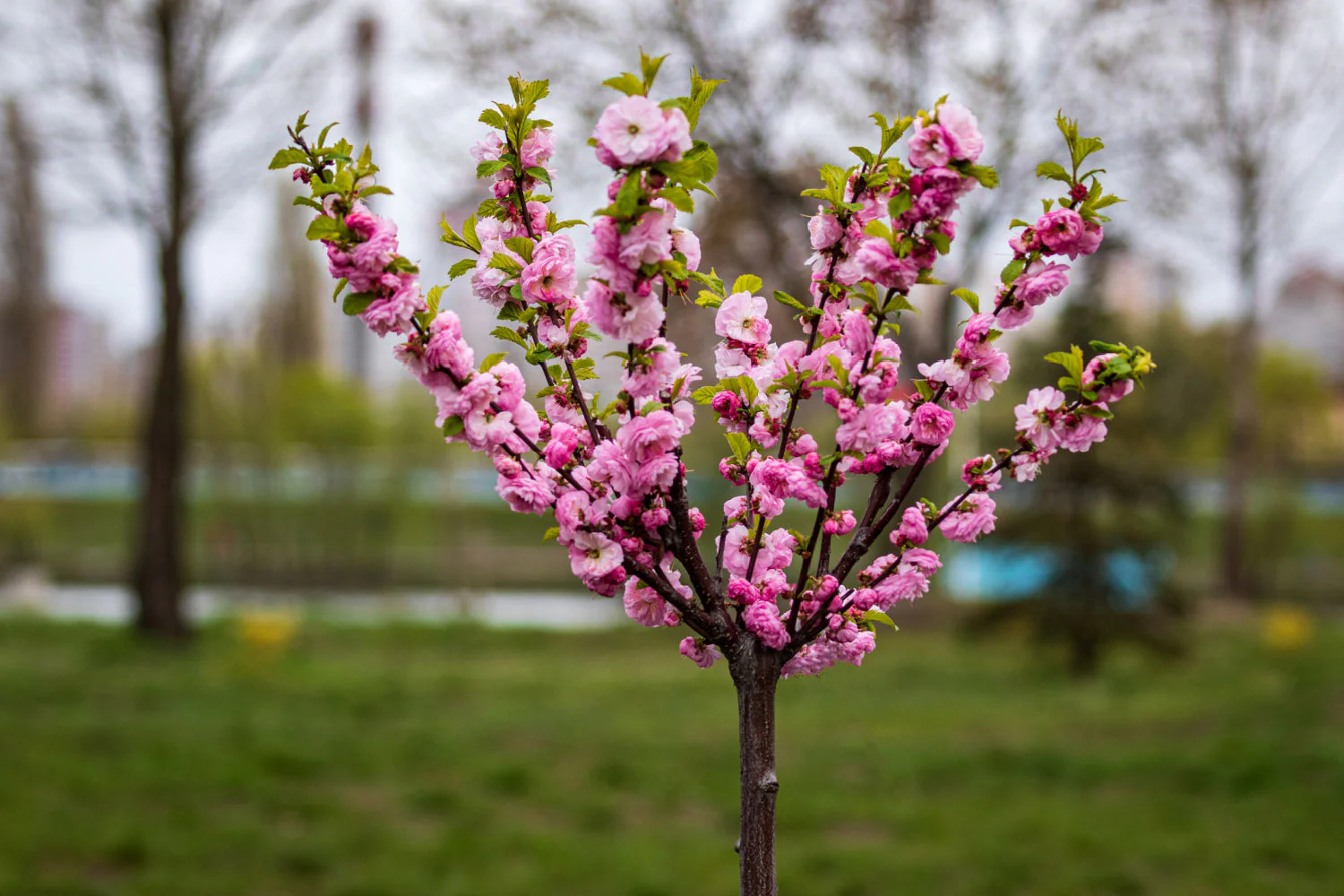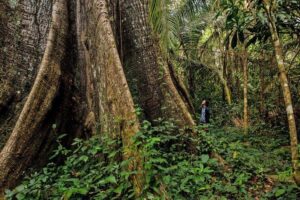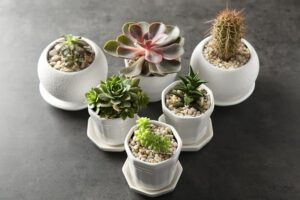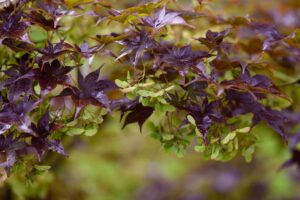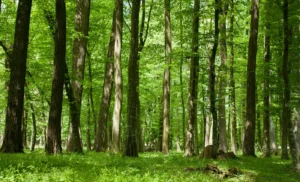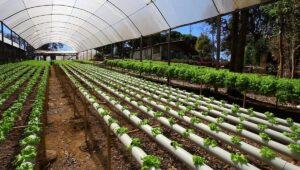Trees to Plant in Spring: A Complete Guide
Spring is the ideal time to enhance your landscape with new trees. As the soil warms and the threat of harsh frost diminishes, young trees have the opportunity to establish strong root systems before summer’s heat arrives. Whether you’re looking to add shade, increase property value, or contribute to local biodiversity, choosing the right trees for spring planting can make all the difference in your landscaping success.
Benefits of Spring Tree Planting
Spring offers numerous advantages for tree planting across the United States. When you plant during this season, you’re working with nature’s timeline, giving your trees the best chance at thriving for decades to come.
Why Spring Is Ideal for Tree Planting
Spring planting allows trees to:
- Establish roots before summer heat stress
- Take advantage of natural rainfall patterns
- Experience less transplant shock
- Have a full growing season to acclimate before winter
- Benefit from warming soil temperatures that promote root growth
According to the USDA Forest Service, properly planted trees can increase property values by 10-20% while providing environmental benefits like improved air quality and reduced energy costs. You can find more information about the ecosystem services provided by urban trees on the USDA Urban and Community Forestry website.
Best Trees for Spring Planting by Region
The United States encompasses diverse climate zones, each with unique growing conditions. Selecting native or well-adapted species for your region ensures greater success and environmental benefit.
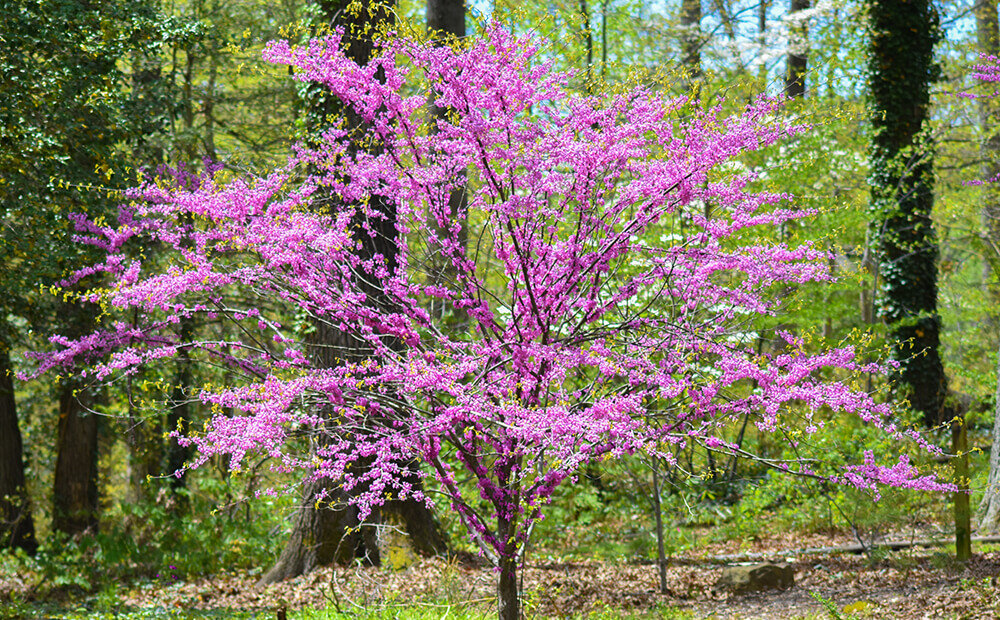
Northeast and Mid-Atlantic
The Northeast’s variable climate requires trees that can handle cold winters and moderate summers. Consider these excellent spring planting options:
- Red Maple (Acer rubrum): A fast-growing native with spectacular fall color that adapts to various soil conditions.
- River Birch (Betula nigra): Featuring attractive peeling bark, this birch species resists the bronze birch borer that plagues European varieties.
- Eastern Redbud (Cercis canadensis): Small flowering tree with stunning pink-purple blooms in early spring before leaves appear.
- American Hornbeam (Carpinus caroliniana): Understory tree with muscular-looking bark and excellent shade tolerance.
Southeast
The Southeast’s hot, humid conditions and occasional tropical storms require resilient tree choices:
- Live Oak (Quercus virginiana): Iconic southern tree with tremendous hurricane resistance and sprawling canopy.
- Southern Magnolia (Magnolia grandiflora): Evergreen with fragrant white flowers and glossy leaves.
- Bald Cypress (Taxodium distichum): Deciduous conifer that thrives in wet areas and provides distinctive texture.
- Sweetbay Magnolia (Magnolia virginiana): Smaller magnolia with fragrant creamy flowers and silver-backed leaves.
Midwest
The Midwest’s temperature extremes and varied precipitation patterns require adaptable trees:
- Kentucky Coffeetree (Gymnocladus dioicus): Drought-tolerant native with unique winter silhouette and few pest problems.
- Swamp White Oak (Quercus bicolor): Adaptable to both wet and dry conditions with strong branch structure.
- American Sycamore (Platanus occidentalis): Fast-growing with distinctive mottled bark and good urban tolerance.
- Serviceberry (Amelanchier spp.): Four-season interest with spring flowers, summer berries, fall color, and attractive winter bark.
Southwest
The Southwest’s arid conditions and intense sun demand drought-tolerant selections:
- Desert Willow (Chilopsis linearis): Small, flowering native with minimal water needs once established.
- Blue Palo Verde (Parkinsonia florida): Distinctive green bark with bright yellow spring flowers.
- Arizona Cypress (Cupressus arizonica): Evergreen conifer with blue-gray foliage and excellent heat tolerance.
- Texas Mountain Laurel (Dermatophyllum secundiflorum): Small tree/large shrub with fragrant purple flowers resembling wisteria.
West Coast
The West Coast’s varied microclimates require region-specific choices:
- Coast Live Oak (Quercus agrifolia): Evergreen oak adapted to Mediterranean climate with drought tolerance.
- Western Redbud (Cercis occidentalis): California native with bright magenta flowers and blue-green foliage.
- Madrone (Arbutus menziesii): Striking red bark with white flowers and red berries (challenging to establish but worth the effort).
- Oregon White Oak (Quercus garryana): Stately native with excellent wildlife value and drought tolerance once established.
Pacific Northwest
The Pacific Northwest’s abundant rainfall and mild temperatures support many species:
- Vine Maple (Acer circinatum): Understory native with spectacular fall color and multi-stemmed habit.
- Pacific Dogwood (Cornus nuttallii): Large white flower bracts and excellent fall color.
- Shore Pine (Pinus contorta): Adaptable native pine with picturesque, windswept form.
- Cascara (Frangula purshiana): Understory tree with berries valuable to wildlife and attractive fall color.

Fast-Growing Trees for Quick Results
For homeowners seeking more immediate impact, these fast-growing species can provide quicker shade and screening while maintaining good structure:
| Tree Species | Growth Rate (per year) | Mature Height | Life Span | Best Regions | Special Features |
|---|---|---|---|---|---|
| Tulip Poplar | 24-36 inches | 70-90 feet | 100+ years | Eastern US | Yellow tulip-like flowers |
| Silver Maple | 24+ inches | 50-70 feet | 100+ years | Most US regions | Drought tolerance once established |
| Freeman Maple | 12-24 inches | 40-60 feet | 60-80 years | Northeast, Midwest | Hybrid vigor, fall color |
| American Sycamore | 24+ inches | 75-100 feet | 250+ years | Eastern, Central US | Distinctive mottled bark |
| Dawn Redwood | 24-36 inches | 70-90 feet | 50+ years | Most US regions | Deciduous conifer with ancient lineage |
| Hybrid Poplar | 60+ inches | 40-50 feet | 30-50 years | Most US regions | Very rapid growth but shorter lifespan |
Flowering Trees for Spring Beauty
Incorporate these flowering trees for spectacular spring displays:
Small Flowering Trees (under 30 feet)
- Dogwood (Cornus florida or C. kousa): Classic spring beauty with horizontal branching and four-season interest.
- Serviceberry (Amelanchier spp.): White spring flowers followed by edible purple berries and brilliant fall color.
- Redbud (Cercis spp.): Pink-purple flowers that emerge directly from branches before leaves appear.
- Flowering Crabapple (Malus spp.): Choose disease-resistant varieties for stunning spring blooms and fall fruit.
Medium-Sized Flowering Trees (30-50 feet)
- Cherry (Prunus spp.): Various species offer spectacular spring displays of pink or white blossoms.
- Yellowwood (Cladrastis kentukea): Fragrant white flower chains and smooth gray bark; blooms heavily every 2-3 years.
- Golden Chain Tree (Laburnum spp.): Stunning chains of yellow flowers (note: seeds are toxic).
- Carolina Silverbell (Halesia carolina): Bell-shaped white flowers that dangle beneath branches in spring.
Evergreen Trees for Year-Round Structure
Evergreens provide constant screening, windbreaks, and winter interest:
Needle Evergreens
- Eastern White Pine (Pinus strobus): Soft, bluish-green needles and graceful form for eastern states.
- Colorado Blue Spruce (Picea pungens): Striking blue color but susceptible to needle cast diseases in humid areas.
- Leyland Cypress (× Cuprocyparis leylandii): Extremely fast-growing but short-lived screening tree.
- Concolor Fir (Abies concolor): Blue-green needles with excellent heat and drought tolerance for an evergreen.
Broadleaf Evergreens
- Southern Magnolia (Magnolia grandiflora): Glossy leaves and fragrant white flowers; best in southern regions.
- American Holly (Ilex opaca): Red berries and spiny foliage; plant male and female for berry production.
- Live Oak (Quercus virginiana): Majestic spreading habit, ideal for southern states.
- Wax Myrtle (Morella cerifera): Fast-growing for quick screens with aromatic foliage.
How to Plant Trees Successfully in Spring
Proper planting techniques significantly impact tree health and longevity. Follow these steps for successful spring planting:
Site Selection and Preparation
- Research mature size: Ensure your planting location accommodates the tree’s full-grown dimensions.
- Check for utilities: Call 811 before digging to locate underground utilities.
- Assess sun exposure: Match tree species to available sunlight levels.
- Evaluate soil conditions: Test drainage by digging a hole and filling with water; if it doesn’t drain within 24 hours, select trees tolerant of wet conditions or amend your soil.
- Consider proximity to structures: Plant large trees at least 20 feet from foundations and utility lines.
Proper Planting Technique
- Dig appropriately: Create a hole 2-3 times wider than the root ball but only as deep as the root ball height.
- Remove containers/burlap: Cut away wire baskets and burlap after placing the tree in the hole.
- Find the root flare: Ensure the point where roots spread from the trunk is at or slightly above ground level.
- Backfill carefully: Use existing soil without amendments, tamping lightly to remove air pockets.
- Create a water basin: Form a 3-inch soil berm around the planting area to hold water.
- Mulch properly: Apply 2-3 inches of mulch in a circle around the tree, keeping it several inches away from the trunk.
Watering Schedule for New Trees
Proper watering is crucial during the establishment period:
- Week 1-2: Water daily if no rainfall occurs
- Weeks 3-12: Water every 2-3 days
- Months 4-12: Water weekly during growing season
- Year 2: Water during extended dry periods (2+ weeks without rain)
The Environmental Protection Agency offers additional guidance on watering schedules based on your specific climate zone through their WaterSense program.
Tree Care After Planting
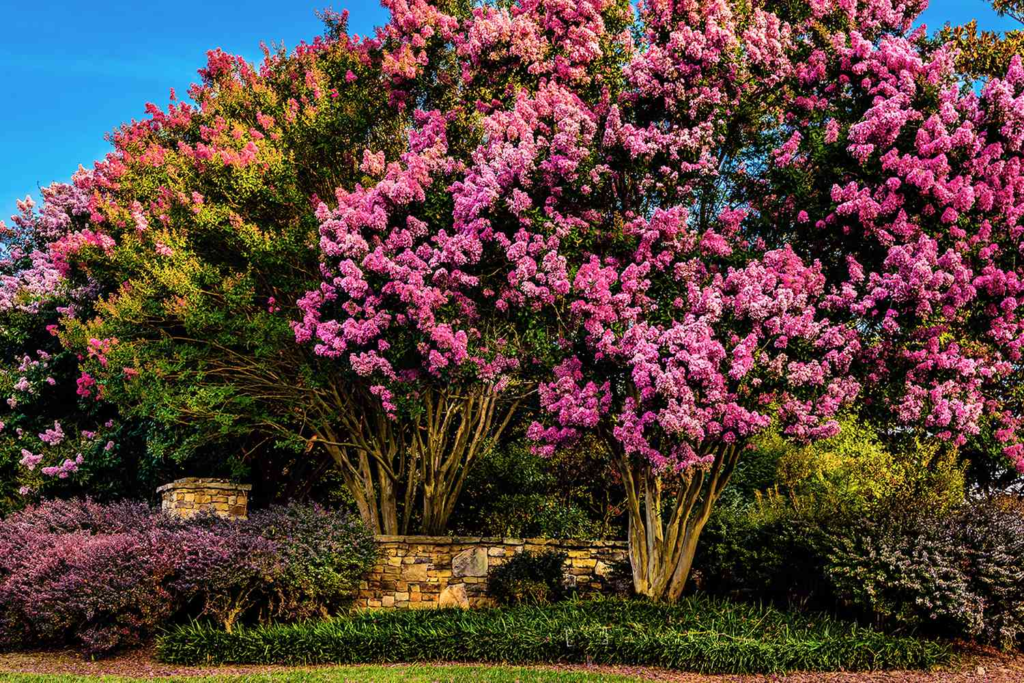
First Year Care
- Monitor moisture: Check soil moisture regularly, especially during hot or windy periods.
- Maintain mulch: Refresh mulch as needed, maintaining a 2-3 inch depth.
- Protect from damage: Install guards to prevent lawn equipment damage and deer rubbing.
- Limited pruning: Remove only damaged or dead branches during the first year.
Long-Term Maintenance
- Gradual training pruning: Begin structural pruning in year 2-3 to develop strong branch architecture.
- Annual inspection: Check for signs of pests, diseases, or structural issues each spring.
- Fertilization: Apply slow-release fertilizer only if soil tests indicate deficiencies.
- Drought protection: Provide supplemental water during extreme drought even for established trees.
Sustainable Tree Selection Strategies
Making environmentally conscious choices benefits both your landscape and the broader ecosystem:
Native Tree Benefits
Planting native trees provides multiple advantages:
- Wildlife habitat: Native trees support local birds, pollinators, and beneficial insects
- Climate adaptation: Native species are already adapted to local rainfall patterns and soil types
- Disease resistance: Many natives have evolved resistance to regional pests and diseases
- Lower maintenance: Once established, natives typically require less intervention
The National Wildlife Federation provides a native plant finder tool to identify tree species indigenous to your specific area.
Climate-Ready Trees
With changing climate patterns, consider future conditions:
- Select trees with wide temperature tolerances
- Choose drought-resistant species even in currently moist regions
- Consider planting southern species at the northern edge of their range
- Diversify your plantings to hedge against emerging pest and disease issues
Conclusion
Spring tree planting represents an investment in your property and the environment that will appreciate for decades. By selecting appropriate species for your region, planting correctly, and providing proper establishment care, you’ll enjoy the many benefits trees offer—from energy savings and increased property value to wildlife habitat and aesthetic beauty.
Take time this spring to evaluate your landscape needs and goals, then select trees that will fulfill those requirements while thriving in your specific conditions. The effort you invest in thoughtful selection and proper planting will be rewarded many times over as your trees grow to maturity.
Remember that your local extension service and state forestry department are excellent resources for region-specific recommendations. Happy planting!
